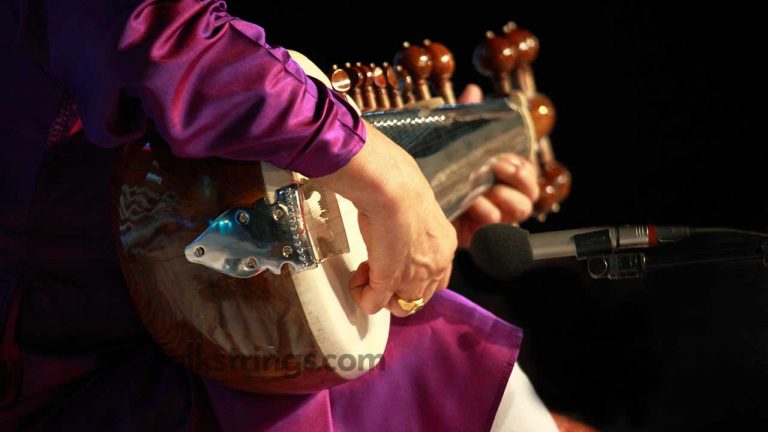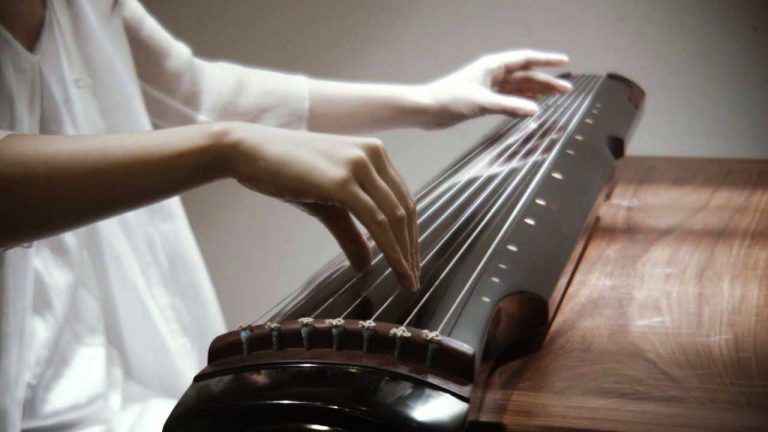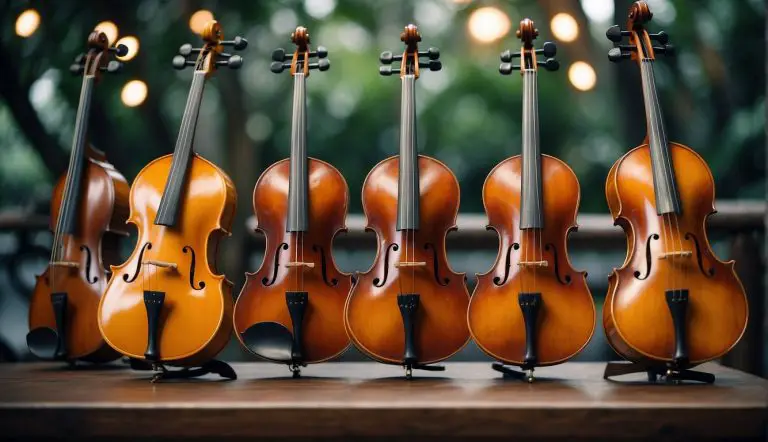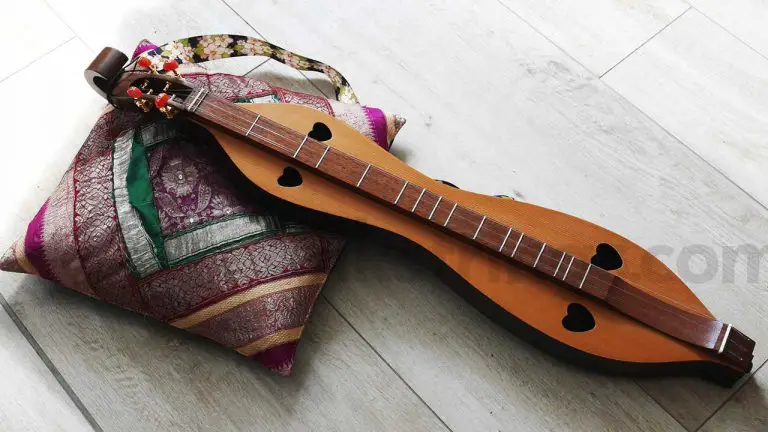The Fascinating Guzheng Instrument and Its Origins
Folkstrings.com is reader-supported. When you buy through links on our site, we may earn a small commission.
Guzheng is a traditional Chinese stringed instrument that directly translates to “ancient zither-type instrument.” It has two bridges with strings stretched at either end, with movable bridges in the middle used for tuning.
It’s an excellent accompaniment for vocals and existed even before the Qin Dynasty. The oldest guzheng was discovered in 1979 in Jiangxi province. It was as old as 598 BCE.
This instrument is still popular worldwide, especially in China. Hundreds of guzheng clubs and studios are in the country, and many Chinese movies include it in various scenes. It’s also more affordable than other Chinese classical instruments.
Read through this article to get the answers to questions about playing the guzheng.
Table of Contents
- Is It Hard to Learn Guzheng?
- Can You Learn Guzheng by Yourself?
- What Is the Best Way to Learn Guzheng?
- Guqin Vs. Guzheng Vs. Zither, Which Is the Easiest Chinese Instrument to Learn?
- Can You Play Guzheng with Nails?
- Conclusion
Is It Hard to Learn Guzheng?
No, it isn’t. Even for beginners, it’s easy to learn to play guzheng. To effectively learn how to play it, it’s essential to know the basics. Today, various guzhengs exist. They have different bridge styles, sizes, number of strings, tones, etc. But the most popular is the full-sized S-Bridge guzheng with 21 nylon strings. It measures 164.5 cm in length, 32.4 cm in width, and 24.1 cm in height.
If you like playing string instruments, then guzheng is worth trying. Initially, the guzheng had five cords until the later dynasties continuously added strings and reached 21. However, there are still 16-stringed implements you can find today.
At first, they were made with metal until the 1950s, when manufacturers made a nylon-coated string.
Guzheng has four octaves and is tuned in a pentatonic scale. The most common keys in this instrument are D: ABCDEF# and G: ABCDEG. When you press B, G, or F#, you can make the F note. Most guzheng players describe its sound as a crystalline tone or a sound of flowing water.
Suppose you have experience and knowledge in playing a musical instrument and want to try guzheng. In that case, you can use Yao Ningxin’s “Teaching Foreigners to Play Guzheng.” It’s in English and suitable for more experienced students. Beginners can also use this book, watch tutorials, or enroll in guzheng special classes to learn. It will take you at least three to six months to learn how to play guzheng.
Can You Learn Guzheng by Yourself?
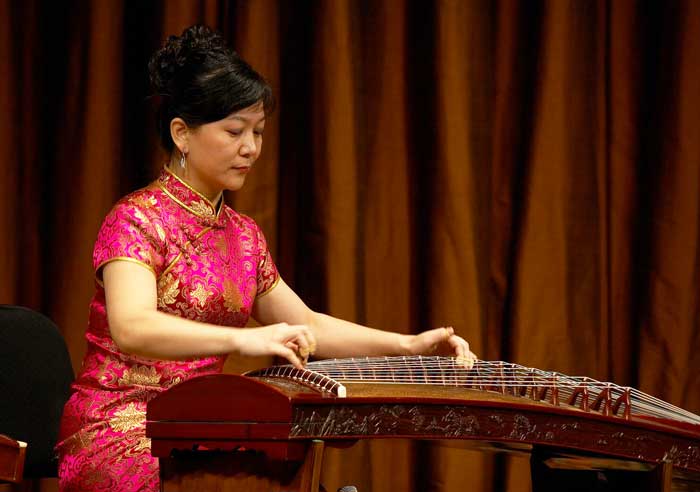
As mentioned above, it’s easy to learn to play the guzheng, and you can do it independently if you have experience playing stringed instruments. Some say the guzheng is like a piano with delicate strings that you must pick without getting too nervous or missing the right notes. But if you don’t have experience, finding the correct string to pluck can be difficult.
After you become familiar with the placement of each string and learn the techniques, you will realize that the guzheng is easy to play but challenging to master like other instruments. If you plan to learn independently, remember that it will be longer and more complicated than having someone teach you in person.
Here are two techniques you should learn to play a song with the guzheng properly:
Traditional
The traditional playing technique involves three fingers plucking the strings: thumb, index, and middle finger. For this style, players must wear finger-picks on their right hand to pluck the strings. Meanwhile, the left hand will be responsible for bending or pressing the strings to create pitch changes.
While guzheng melodies are mostly one note, you can simultaneously match them to another octave note using your right thumb and middle finger.
Modern
Modern technique is very different as it requires using all your fingers. This means that all your fingers except your two-pinky fingers will be wearing finger-picks.
You’ll utilize your hands to pluck and bend the strings to create accompaniments, out-of-tune sounds, and melodies. However, it’ll also involve other methods such as strumming and arpeggios techniques adapted from piano and guitar playing.
What Is the Best Way to Learn Guzheng?
A face-to-face class with a guzheng master is the best and most effective way to learn to play the guzheng. Since guzheng is popular, you can easily find a guzheng master in your area to teach you. If there isn’t one, you can look for online classes. Another way is to travel and enroll in a music school in China that offers guzheng classes, where you can learn the traditional way of playing.
Learning on your own is cheaper, but once you reach your limit and basic skills, it will be harder for you to continue. Therefore, enrolling in physical or online classes with a reliable guzheng teacher is the best choice if you plan to continue playing and improving.
Here’s a tip: There are several low cost books available online that can teach you to play the guzheng. Online websites also offer free courses with teachers’ consultation to help beginner students learn without spending too much.
Guqin Vs. Guzheng Vs. Zither, Which Is the Easiest Chinese Instrument to Learn?
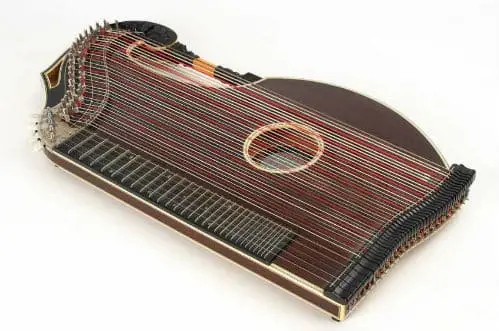
Guzheng is best for novice musicians as it’s cheaper and easier to learn initially.
Guqin and guzheng are both from the Chinese zither family, but guzheng is easier to learn between the two. However, guzheng can get tricky as you move to a more advanced level. On the other hand, guqin has the reputation of being difficult to learn and play.
If you don’t know guqin, it’s a seven-stringed zither instrument that almost looks and sounds similar to guzheng. These zither instruments may look similar but different in size, strings, and price. When it comes to tuning, the guqin is more complex because it has pegs, while the guzheng has a movable bridge.
Can You Play Guzheng with Nails?
You need nails to play guzheng. You can grow out your nails and trim them into an oval shape. Playing with natural nails create a more classical sound, but they are not thick enough for guzheng strings and are easy to break than fake nails.
To make it clear, it’s not the fake nails from the salon. It’s a finger-pickers that you will tape into your fingers. It’s thicker, safer, and suitable for playing modern songs. The materials used in making these fake nails are steel wire, tortoiseshell, ivory, cow horn, celluloid, and bamboo. In playing guzheng, it’s better to use fake nails than real ones.
Conclusion
Guzheng is a great starting point to begin your Chinese stringed instrument journey. It’s more affordable, has a more accessible community, and is easier to learn. However, it’s also important to remember that your results will depend on your speed, perseverance, and passion for learning.
If you plan to take guzheng seriously, the best choice is to invest in a teacher who can guide you and point out your mistakes so you can correct and improve them. At the same time, when you’re in the advanced level of guzheng playing, you’ll find it easier to have someone to show you the ropes.
Author Profile
-
Daniel Johnstone is an English writer with a love for stringed instruments from around the world.
He shares his love for these instruments through his writing for folkstrings.com, a website dedicated to all things related to folk string music.
Daniel's passion for music started at a young age, and he has since become an accomplished musician, playing guitar, cavaco, and recently, the harp.
His dedication to learning and sharing his knowledge of stringed instruments is evident in his insightful and engaging blog posts. Whether you're a seasoned musician or a beginner, Daniel's writing is sure to inspire and entertain you.
When he's not playing music or writing, you can find Daniel exploring new instruments and seeking out new sounds to share with his readers.
Latest entries
 AutoharpApril 4, 2024What Is the Autoharp Made Of: Exploring Its Materials and Craftsmanship
AutoharpApril 4, 2024What Is the Autoharp Made Of: Exploring Its Materials and Craftsmanship AutoharpApril 4, 2024Is Autoharp Easy to Play? Unveiling the Truth for Beginners
AutoharpApril 4, 2024Is Autoharp Easy to Play? Unveiling the Truth for Beginners AutoharpApril 4, 2024What Is an Autoharp Worth? Your Guide to Pricing and Value
AutoharpApril 4, 2024What Is an Autoharp Worth? Your Guide to Pricing and Value AutoharpApril 4, 2024Are Autoharp and Zither the Same Thing? Unraveling String Instrument Myths
AutoharpApril 4, 2024Are Autoharp and Zither the Same Thing? Unraveling String Instrument Myths
Affiliates:
This post may contain affiliate links that at no additional cost to you, the site may earn a small commission. We only recommend products we would use ourselves and all opinions expressed on this site are our own.
Accuracy Advice:
While we strive to provide up-to-date and accurate information, the content in this article may not reflect the most current research or medical guidelines. We encourage readers to do further research and consult with professionals for more personalized advice.
Our Recommendations:
The products and services mentioned in any of our articles are recommended based on our independent research and personal experience. We are not sponsored by any company. We aim to suggest products and services we believe are of high quality and could be beneficial to our readers.



